Latest Stories

Subscribe to Our Blog
When to Prune Hydrangeas in Ohio
Every year, we hear the same question about hydrangeas: when is the best time to prune?
In many cases, this question comes after a hydrangea has already become large and unruly. Unfortunately, this is usually not the best time to prune these popular plants.
The first step in assessing when to prune hydrangeas in Ohio is identifying the type of hydrangea you have.
Pruning Other Plants Versus Hydrangeas
With most other plants, the timing of pruning is simple: you prune after the plant flowers.
In the case of spring bloomers like forsythia and lilac, you would prune in the spring after flowering occurs. The reason for this timing is the buds for the following spring set in the summer and pruning them too late will result in little or no flowers that next spring.
In the case of summer bloomers like Rose of Sharon, you would prune at the end of summer or the beginning of fall when the plant has finished flowering.
The question of when to prune hydrangeas does not have as simple of an answer. With several kinds of species that each have their own unique quirks, hydrangea care in Ohio — specifically when to prune these plants — varies based on the species at hand.
How to Identify Your Type of Hydrangea
Excluding the climbing hydrangea species (Hydrangea anomala petiolaris), there are four common species of hydrangeas.
Hydrangea Macrophylla
Sometimes referred to as Big Leaf hydrangeas, the Hydrangea macrophylla species includes Mopheads and Lacecaps. In general, the leaves of these hydrangeas are relatively thick and crisp, somewhat shiny, and heart-shaped. The edges are serrated, and the leaf stems (or petioles) are short, causing the leaves to hug close to the main stem. Another characteristic to note about this hydrangea species is the soil pH affects flower color (acidic = blue, alkaline = pink).
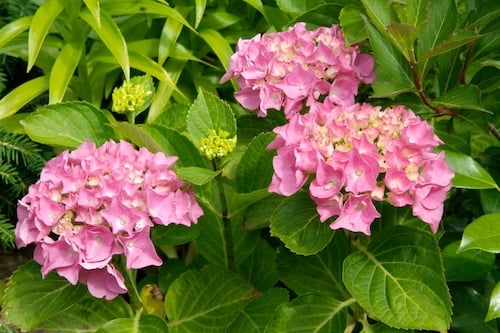
Mophead hydrangea (Source: Pinterest)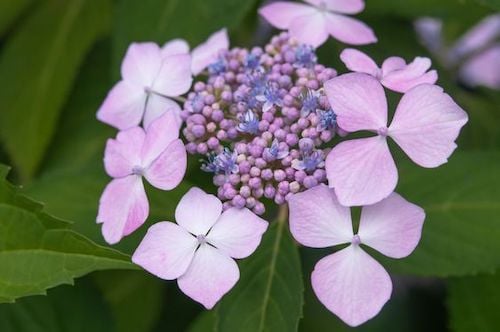
Lacecap hydrangea (Source: Pinterest)
Hydrangea Quercifolia
More commonly known as the Oakleaf hydrangea, this type of hydrangea is typically the easiest to identify because of its oakleaf-shaped leaves. The plant’s brown/tan-colored exfoliating bark further helps distinguish it from other types of hydrangeas, especially when leaves aren’t present. Long and conical-shaped, the Oakleaf hydrangea’s flowers tend to start out a creamy white hue and age to pink during the summer and early fall.
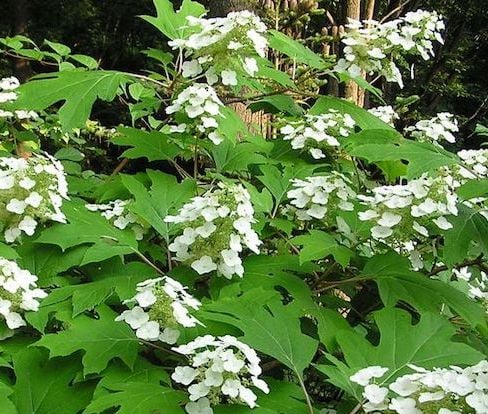
Oakleaf hydrangea (Source: Pinterest)
Hydrangea Paniculata
While the Hydrangea paniculata species is often referred to as PeeGee hydrangeas, this is just one variety within the species. Other popular varieties under this umbrella are Limelight and Tardiva.
This group of hydrangeas features a panicle-shaped flower that is somewhat similar to that of the Oakleaf hydrangea. Whereas the Oakleaf hydrangea flower starts out creamy white, most paniculatas start out a true white (or greenish-white in the case of Limelight) and then age to a pink or red hue.
One of the other defining characteristics of panicle hydrangeas is they are the only type of hydrangea that comes in a tree form. Whereas the macrophylla species tends to be mound-like, the paniculata species is usually more like a multi-stemmed shrub that can reach as high as 15 feet. It’s more common for paniculatas to reach about 8 feet without pruning.
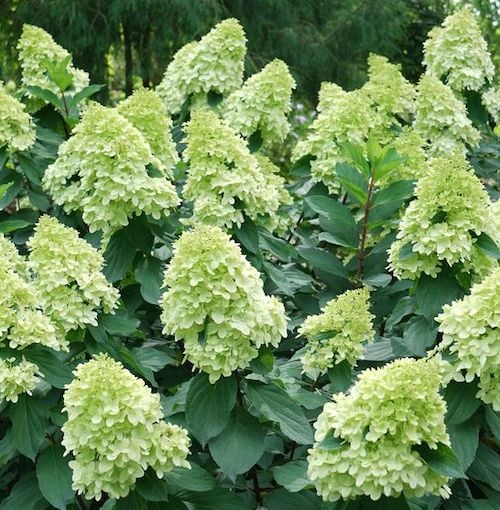
Limelight hydrangeas (Source: Pinterest)
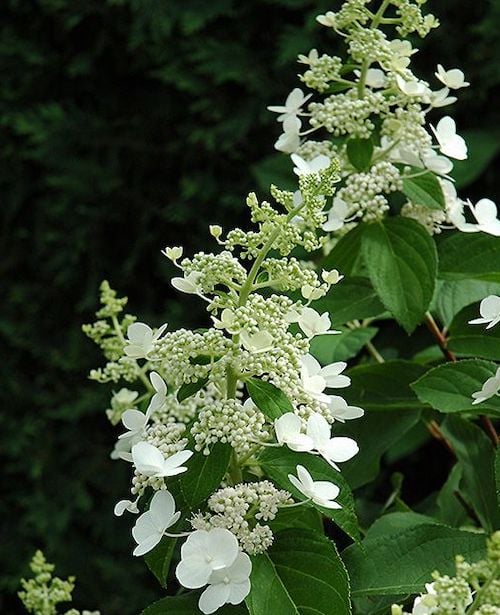
Tardiva hydrangeas (Source: Pinterest)
Hydrangea Arborescens
The Hydrangea arborescens species is the group that is sometimes referred to as the Smooth-leaved hydrangeas. The most well-known variety of this plant species is the Annabelle, which features large flowers that open green, turn white and return to green again. Other varieties like Invincibelle Spirit and Incrediball have also gained popularity in the past few years.
Arborescens hydrangeas are recognized by their heart-shaped leaves that are thinner and floppier than the macrophylla species. They have a matte surface and a coarser texture than the smooth leaf of the Mophead, with leaf stems that are long and held away from the main stem.
Many hydrangea varieties within this group are top heavy and prone to fall over after wind and rain storms.
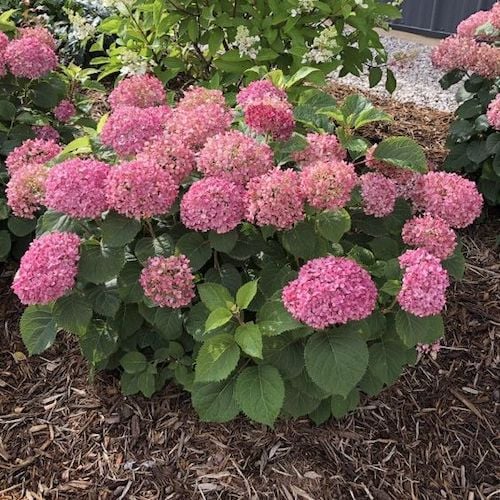
Invincibelle hydrangeas (Source: Pinterest)
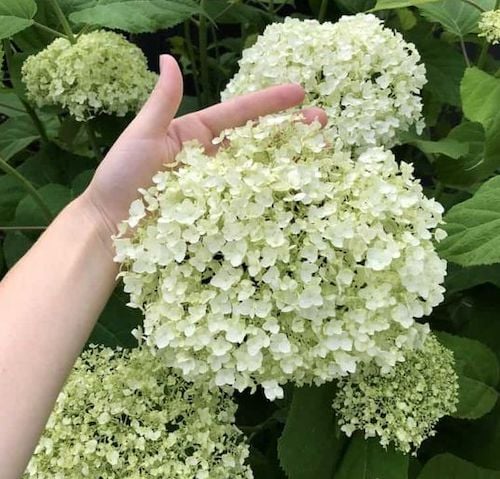
Incrediball hydrangeas (Source: Pinterest)
The Best Time to Prune Each Hydrangea Species
Hydrangea Macrophylla: Late Summer
With the exception of the ever-bloomers like Endless Summer that can be pruned at any time of year, macrophyllus bloom on old wood, meaning that flowers bloom on last year’s growth. Flower buds set between the late summer to early fall, so it’s best to cut back the plant when the blooms are spent. While acceptable, early spring pruning will result in sacrificing some flowers for that season.
In the fall, Endless Summer and other ever-bloomers can be cut back to control their height and size. In the spring, pruning before blooming begins will actually encourage new growth and increase the number of flower clusters. Spent flowers can be removed at any time of the year to further support growth.
Hydrangea Quercifolia: Late Summer to Early Fall
Oakleaf hydrangeas bloom on old wood and their buds set early in the fall. The plants should be pruned immediately after the blooms are spent.
Hydrangea Paniculata: Fall, Winter or Spring
Although it’s not necessary to prune paniculatas every year, this species can quickly get out of hand if they are not maintained. Paniculata hydrangeas bloom on new wood, meaning flowers bloom on young growth, so they can be pruned regularly as needed and still flower.
Hydrangea Arborescens: Fall, Winter or Spring
Hydrangeas arborescens bloom on new wood and can be trimmed in the fall, winter or spring. People will typically cut back these plants in the fall, similar to a perennial. While this is acceptable, it can result in thinner, weaker stems that fall over more easily. If left up until spring, and then thinned out and lightly trimmed, you’ll end up with a stronger stemmed plant.
Looking for the help of a professional in maintaining your Northeast Ohio landscape? Green Impressions offers personalized care that saves you time and delivers effective results. Learn more.





